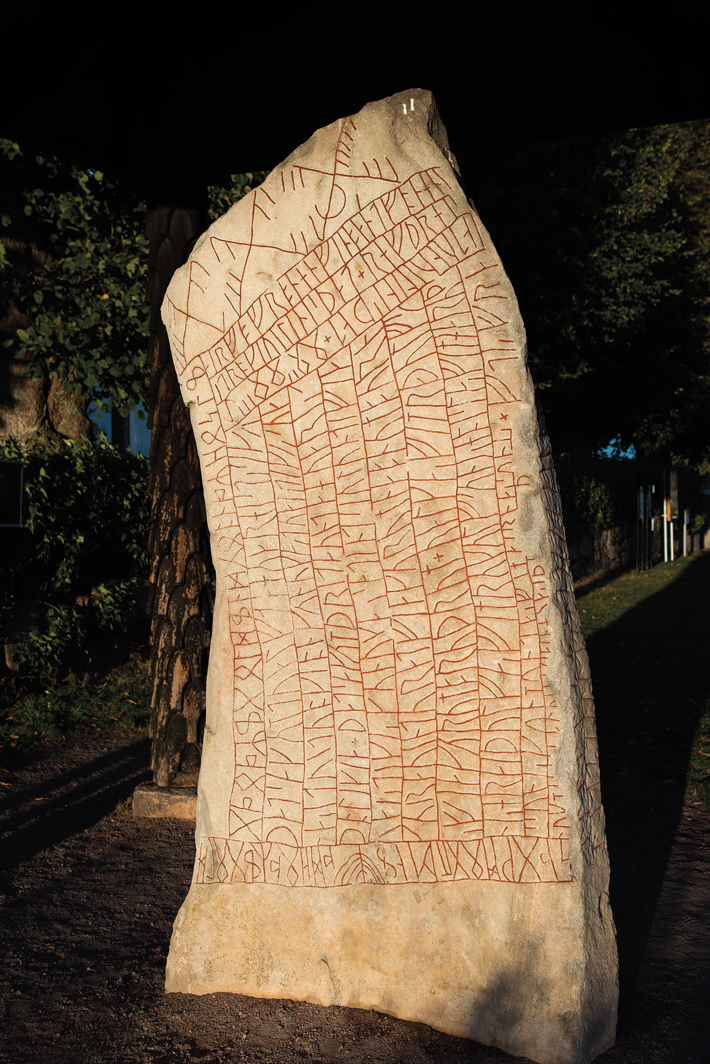(Helge Andersson) Rök runestone, Sweden
In the language of the Vikings, Old Norse, rök means “monolith,” and no other runestone stands out from its peers in more ways than Sweden’s Rök. The five-ton stone measures eight feet tall and its five sides are covered with the longest runic inscription in existence—some 760 runes divided into 28 lines. And, while the vast majority of runestones date to after the mid-tenth century A.D., the Rök was inscribed much earlier, around A.D. 800. “It’s the emperor of runestones,” says Henrik Williams, a runologist at Uppsala University. “Nothing can compare with it.”
Although scholars are united in recognizing the Rök’s singularity, with regard to its meaning all they can agree on is that it was set up by a local chieftain named Varinn as a memorial to his son Vamoth. The stone’s inscription has defied attempts at interpretation since the mid-nineteenth century, when it was transcribed after the Rök was removed from a structure into which it had been built centuries earlier. Decoding the inscription is made especially difficult as it features several styles of writing, including the earliest form of runes, called Elder Futhark, and two types of cipher. It’s not clear in what order the sections of the text are supposed to be read—or if it was even intended to be understood by mortals at all. “I don’t think this was ever meant to be read by humans,” says Bo Gräslund, an archaeologist at Uppsala University. “It was only meant for the gods.”
Read the rest of this article...
